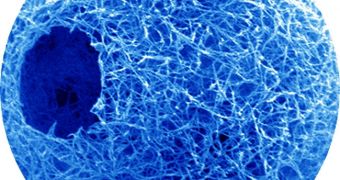In a development that could easily lead to the development of new treatments against common wounds, researchers managed to create a special type of polymer that can delivery cells within damaged tissues.
The new material can be fashioned in the shape of a star, but researchers say that its main trait is that it's biodegradable. This ability was tremendously important for the type of application the scientists that designed the polymer had in mind.
They wanted to produce a type of structure that can be used to enclose living cells. The polymer would then act as a carrier, taking the cells deep within damaged tissue, via injections. Once at these locations, the polymer would biodegrade, leaving the healthy cells inside the wounds.
Amazingly, researchers at the University of Michigan managed to produce such a polymer, and to demonstrate in tests that cells which remain in the wounds after the polymers degrade carry on living, and forming new tissue.
One of the most important things about the new spheres is that they have the ability to temporarily mimic the growing environment of living cells. This is what allows them to transport their precious cargo without damaging it. It is also why cells continue to live after the polymer degrades.
The research was led by University of Michigan School of Dentistry professor Peter Ma. He is also the lead author of a new paper detailing the findings, which is scheduled for publication in an advanced online issue of the esteemed journal Nature Materials.
UM investigators Xiaohua Liu and Xiaobing Jin are listed as coauthors of the new research paper.
According to the team, the new technique is especially well suited for use on patients suffering from certain types of cartilage injuries. At this point, some of these conditions have no viable treatment.
Ma reveals that the new carriers can do their job effectively because they are very porous. This ability allows for nutrient chemicals to pass through, and reach the cells that are stored within. As such, it becomes possible for the cells to thrive before their protective layer degrades.
At the same time, the new polymers do not produce any harmful chemicals when they degrade, which means that the cells they carry are left unaffected. Experts have been looking for such a combination of materials for quite some time now, but with little success thus far.
Ma reveals that a few lab tests were already conducted using the new nanoscale spheres. The investigations showed without a doubt that wounds treated with the method exhibited a level of new cell growth that was 400 percent higher than in control groups.

 14 DAY TRIAL //
14 DAY TRIAL //